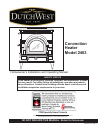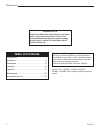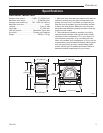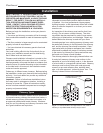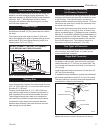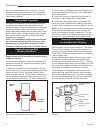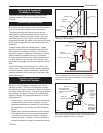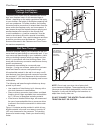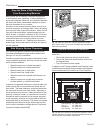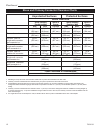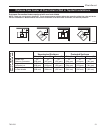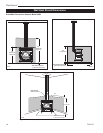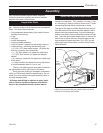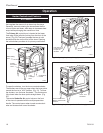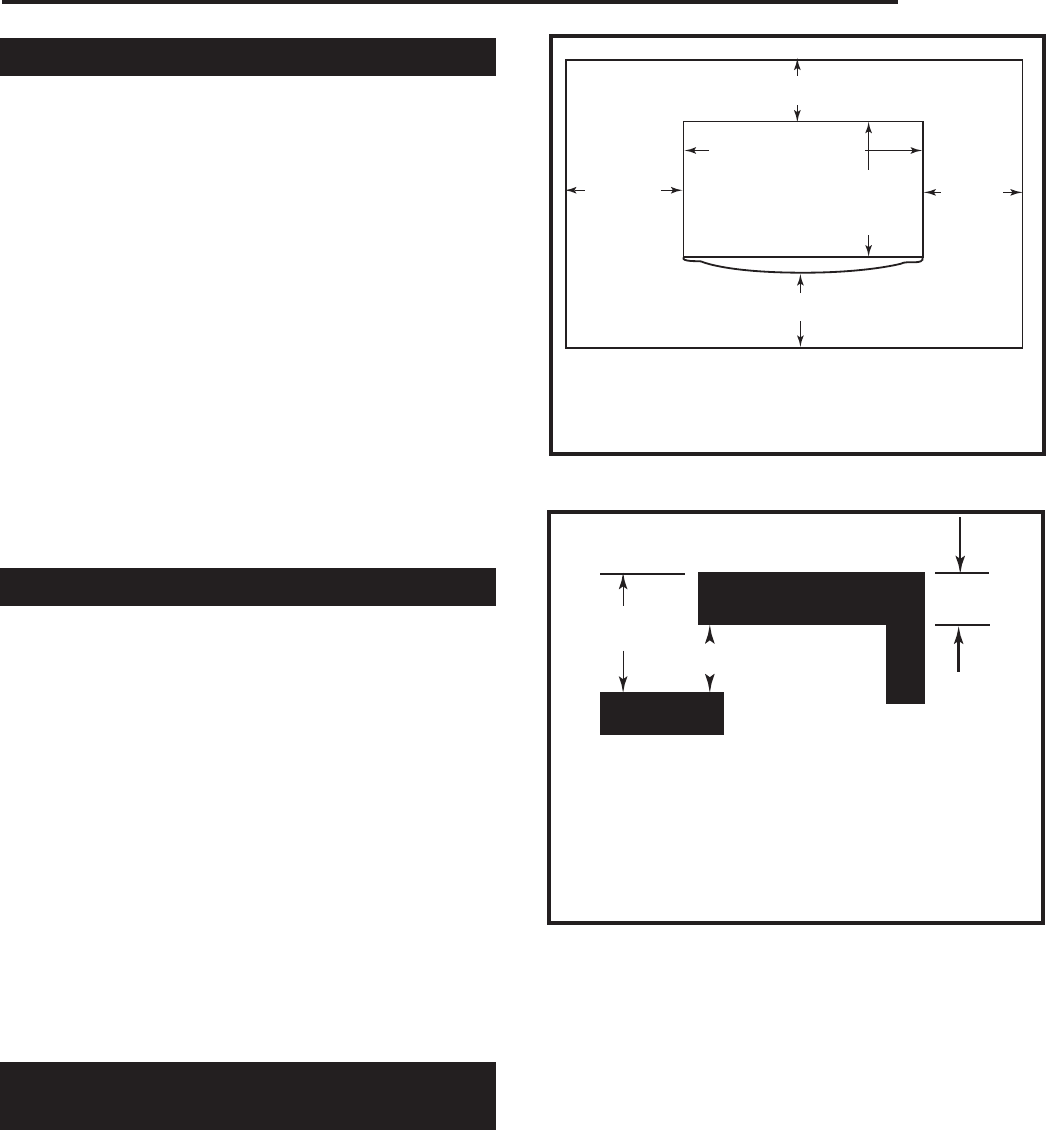
9
Dutchwest
7001219
Floor Protection
Freestanding Installations
A constructional hearth should be provided of solid,
noncombustible material at least 125 mm thick (which
may include the thickness of any solid, noncombustible
floor under a hearth) and at least 33” (838 mm) deep
by 40” (1016 mm) wide. Note that at these minimum
dimensions, the stove will be offset toward the right side
of the hearth (as you face it) to maintain proper protec-
tion beyond the side loading door. If you wish to place
the stove symmetrically on the eharth, add 6” (152 mm)
to the right side.
Combustible material should not be placed under a
constructional hearth unless:
(a) it is to support the edges of the hearth, or
(b) there is an air space of at least 50 mm between the
material and the underside of the hearth, or there is
a distance of at least 250 mm between the material
and the top of the hearth. (Fig. 13)
Fireplace Installations
You may install your Dutchwest Convection Heater in
an existing fireplace as a fireplace insert with no legs,
or with the standard legs attached.
To install the heater without legs as a fireplace insert,
the floor must be completely noncombustible, such as
an unpainted concrete floor over earth.
Many fireplaces do not satisfy the “completely non
-
combustible” requirement because the brick or con-
crete hearth in front of the fireplace opening usually is
supported by heavy wooden framing as in Figure 13.
Because heat passes readily through brick or concrete,
it can easily pass through to the wood. As a result,
such fireplace hearths are considered a combustible
floor. You may not install a heater on a combustible
hearth without legs. Standard leg installations must
include the bottom heat shield. The floor protector
must also meet standard requirements for freestanding
installations.
Floor Protection for Fireplace
Installations with Standard Legs
Fireplace installations with the standard legs and the
bottom heat shield must have a floor protector of the
same construction as that specified for freestanding in-
stallations: 1/4” non-asbestos mineral board or equiva-
lent, or 24 gauge sheet metal (that may be covered with
a decorative noncombustible material if you desire).
The floor protector must extend at least 16” (406 mm)
from the front of the stove and from the left (loading
door) side, and at least 6” (152 mm) from the right side
and rear. It must also provide protection beneath any
horizontal runs of the chimney connector, including 2” to
either side.
Many raised hearths will extend less than the required
distance from the front of the heater when it is installed.
In such cases, sufficient floor protection, as described
above, must be added to extend the hearth 16” (406
mm).
Hearth rugs do not satisfy the requirements for floor
protection.
Fireplace insert installations also have specific clear
-
ance requirements to the side walls, side decorative
trim, and fireplace mantel. This information is found in
“Fireplace Installation Clearances” in this section.
REMINDER- FIREPLACE INSERT INSTALLATIONS
WITHOUT LEGS ARE PERMISSIBLE ONLY IF THE
HEARTH IS COMPLETELY NONCOMBUSTIBLE,
SUCH AS UNPAINTED CONCRETE OVER EARTH.
ST422
Fig. 12 Be sure to follow exactly the floor protection require-
ments on all four sides of the stove.
ST422
floor protection
6/27/00 djt
6“ (152 mm)
6“
(152 mm)
12”
(305 mm)
12” (305 mm)
22” (559 mm)
15”
(381 mm)
Minimum Dimensions for Noncombustible Floor
Protectors (Depth x Width)”
33” x 40” (838 x 1016 mm)
C
B
A
ST846
hearth construction
3/05 djt
Top surface of hearth
Combustible material (not sup-
porting edge of hearth) should
not be nearer than either (but not
both) of distances A or B
Combustible
material supporting
hearth
A: At least 250 mm
B: Air space at least 50 mm
C: At least 125 mm thick
Fig. 13 Hearth construction.
ST846



